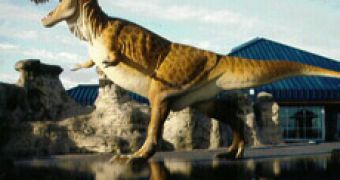Yet another myth seems to have been busted. A team of paleontologists from North Carolina State University has just determined that the mighty predator actually had more in common with today's ostriches than with it did with reptiles.
This new evidence emerged when the team lead by Dr. Mary Schweitzer discovered the fossilized bones of what in the beginning seemed to be a male T-rex, but which in the end turned out to be something even better, an 18-year-old female which was very busy producing eggs when she died, around 68 million years ago.
The team has detected microscopic evidence of a specialized reproductive tissue, known as medullary bone, lining the hollow cavity of the T- rex's broken leg bone. This type of tissue is also found in modern flightless birds, ostriches in particular.
Since only females produce medullary bone, its presence in the T-rex's femur indicates that this fossil was a female, and probably one who died toward the end of her laying cycle, because medullar tissue, which provides calcium for eggs, appears only when the female birds are ovulating.
Speaking about the discovery, Professor Mary Schweitzer said that "In addition to demonstrating gender, it also links the reproductive physiology of dinosaurs to birds very closely".

 14 DAY TRIAL //
14 DAY TRIAL //